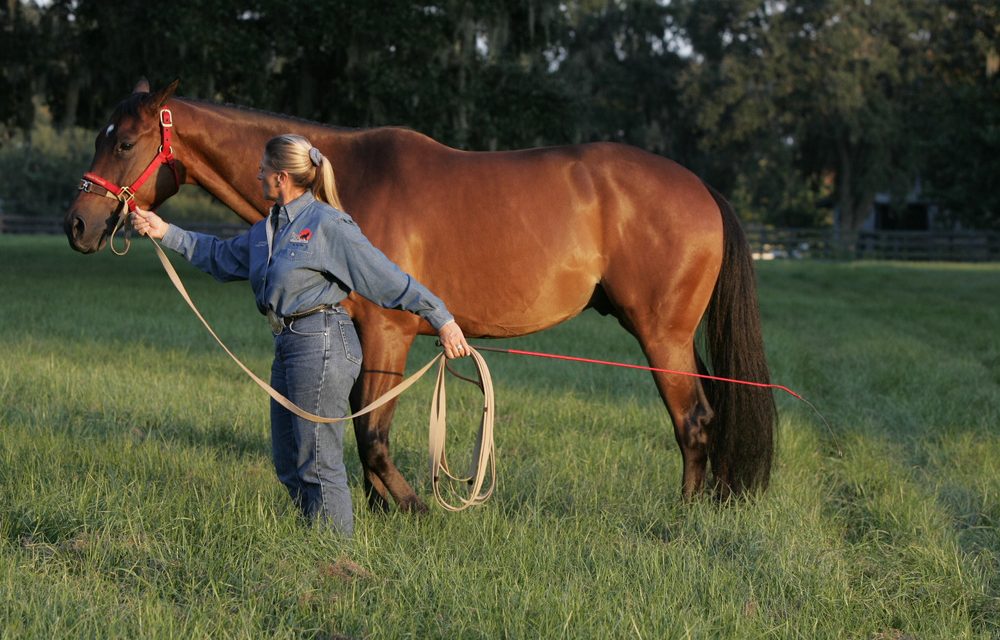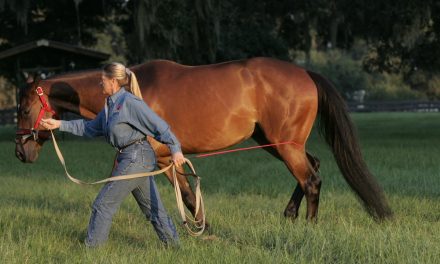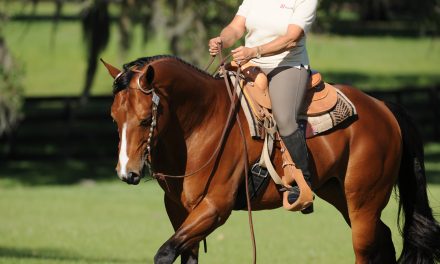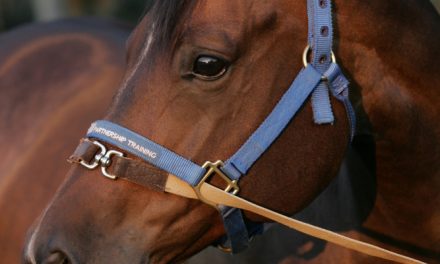Palm Partnership Training™
Building a Partnership with Your Horse
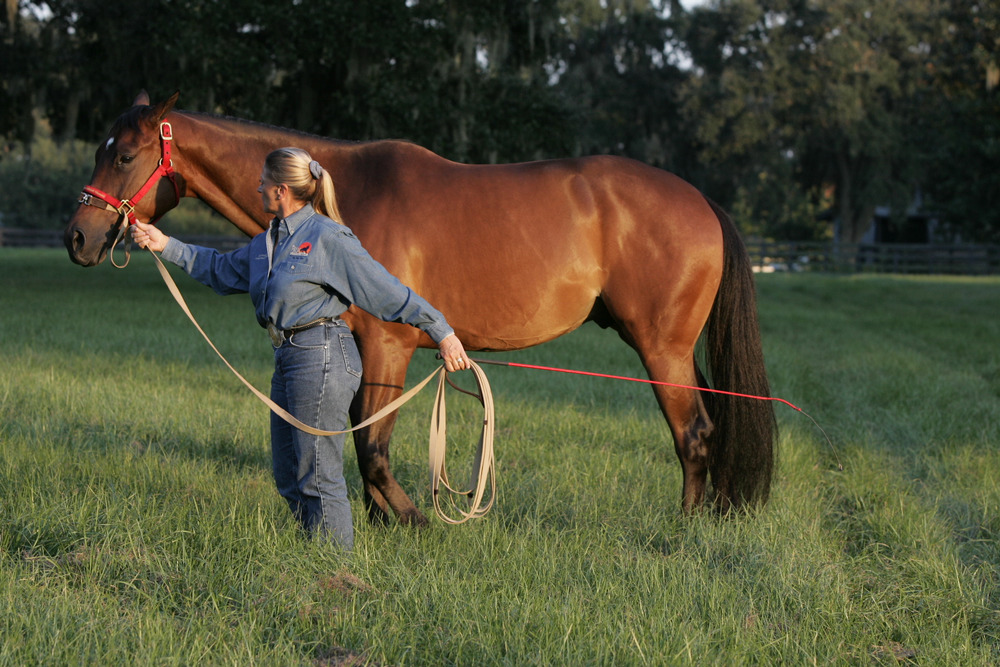
In the next two articles I am going to give you two methods to change your horse’s direction when working at liberty in a paddock or arena. Each technique eliminates the need to stop the horse and “manually” turn him around so that he is facing in the opposite direction. Instead he will learn to respond to your commands to turn and change directions on his own as he travels on a “diagonal track” across two of the paddock/arena’s diagonal corners. This allows him to keep his forward momentum as he changes direction.
Technique #1: Changing Directions At Liberty – with an Assistant.
In this article I will describe how to change directions when you have another person to help you with the liberty lesson. I will describe this technique as if the horse is tracking to the right and you want him to change directions to track left. Both handlers working the horse at liberty should be correctly positioned on the paddock/arena’s centerline. Practice this at a walk before trying it at a trot.
As the horse enters one of the paddock/arena’s narrow or “short” sides, handler #1 (closest to him) moves off the centerline so that she is following the horse’s hindquarters with her whip low as she encourages him to move forward and through the corner. At the same time handler #2, at the opposite end of the paddock, turns to face handler #1 so she is watching the horse.
As the horse comes into the short side, handler #1 opens her left arm so her whip points horizontally at the horse’s hindquarters to keep him moving forward. At the same time, handler #2 moves off the centerline and towards the fence line that the horse is preparing to travel down. Handler #2 raises the whip in her right hand horizontally toward the fence to block the horse’s line of travel down the fence line. As the horse comes out of the second short corner, the only route for him to follow becomes a diagonal path between both handlers.
As the horse follows a diagonal path across the paddock and passes handler #1, she switches the whip to her right hand. This gives a visual cue, like a pointer, for the horse to continue on the diagonal track to the right. Once he’s crossed the centerline, handler #1 resumes her position on the centerline. Handler #2 takes over. She turns to follow his movement across the diagonal with her whip extended horizontally towards his hindquarters to encourage him to move forward through the new corner. He is now tracking to the left. Once the new direction is established, both handlers move back to their positions on the centerline and continue the liberty lesson.
Working at liberty and changing directions really helps develop your eye and coordinate your reactions in relationship to the horse’s position. As you try these techniques, you will discover how critical your position and reactions are in getting the horse to respond correctly. If you find that the horse stops or turns when you are not asking him to make these changes, first reassess your position.
Make sure the horse stays forward while changing direction at liberty. Use your whip behind him to encourage forward movement.
If he gets anxious and increases his gait on his own, use a voice command to slow him down. Use your voice to keep his attention if he starts looking over the fence or gets distracted from you. Remember…in liberty work your voice is your main communication tool to ask the horse to respond to your commands.
In the next article I’ll give you a technique for changing directions at liberty when working without an assistant. We’ll wrap up our liberty lessons with trouble shooting tips to help make liberty work an enjoyable and productive training tool for you and your horse.
For more information about Lynn Palm, her trainings in Florida and other parts of the U.S., DVDs and more, visit www.lynnpalm.com or call 800.503.2824.

